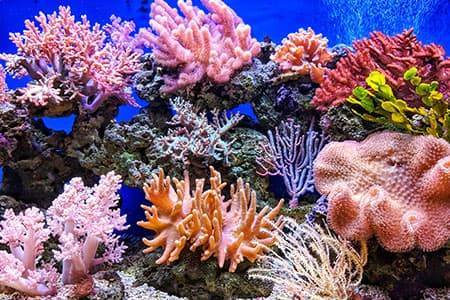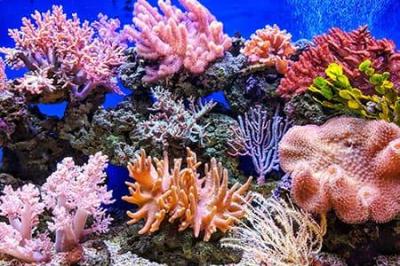Can certain sounds help save coral, just as music can shape human behavior? This question was addressed in a recent study that revealed audio recordings of healthy coral could aid efforts to restore coral reef ecosystems damaged by climate change and human activity.
As the Great Barrier Reef in Australia experiences its seventh episode of mass bleaching and vast areas of coral in the Northern Hemisphere suffered severe losses last year in Florida and the Caribbean due to record-high ocean temperatures in recent months, scientists are exploring various ways to halt this environmental massacre.
Researchers at the Woods Hole Oceanographic Institution concluded in a study published in the journal Royal Society Open Science, that one way to aid coral restoration may be through sound. After broadcasting audio recordings of healthy corals, resembling underwater symphonies made up of "fish singing" and "shrimp snapping," researchers found that these sounds encourage coral larvae to settle on the seafloor in damaged reef areas, giving them a chance to regenerate.
Study lead author Nadège Aoki states that "the local soundscape is extremely important for these corals" during their early life stage when searching for a permanent habitat to grow. She views broadcasting these sounds as a "vital tool" in restoration efforts.
After listening to coral in the U.S. Virgin Islands for over a decade, researchers concluded that specific sounds distinguish healthy habitats from those affected by bleaching, diseases, or damage from human activities (pollution or destruction caused by fishing or excessive tourism).
Aoki explains that "healthy corals generally contain many low-frequency sounds, such as chirps, grunts, and hums made by fish, against a nearly constant backdrop of crunching and popping noises produced by shrimp." In contrast, deteriorated reefs host fewer species and are "quieter."
To conduct their study, the team collected samples from a highly resilient type of coral known as "mustard hill" coral (scientific name Porites astreoides) due to its clustered shape and yellow color and distributed them across three reefs in the U.S. Virgin Islands: one in good condition and the other two in more degraded states.
The researchers then installed underwater speakers to broadcast their collection of sounds from healthy corals in one of the degraded reefs and found that coral larvae there settled at rates averaging 1.7 times higher than in other reefs that did not experience any sound broadcast.
Aoki acknowledges there is still much to learn about how corals respond to sound, including whether different species behave in the same way and how corals "hear." However, this finding suggests that sound can be integrated into restoration efforts, albeit under careful observation and protection, as settling on reef structures is just one stage in the life of corals.
Coral reefs serve as habitats for about a quarter of marine creatures, and millions of people rely on them for food and income. Up to 90% of coral reefs could disappear if global warming reaches 1.5 degrees Celsius above pre-industrial levels.




